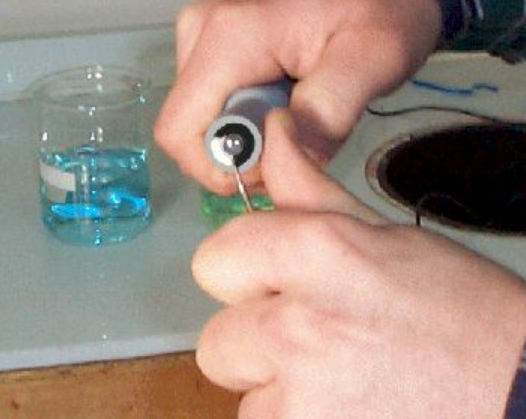Everyone knows that the residual chlorine electrode is a sensor used to measure the residual chlorine content in water, and its main function is to detect and monitor the residual chlorine concentration in water. Residual chlorine is widely used for disinfection in water treatment processes, which can kill bacteria, viruses, and other microorganisms in water, thereby ensuring the hygiene and safety of water.
However, during long-term use in water treatment or water supply systems, some substances such as calcium, magnesium, iron, etc. will deposit on the electrode surface, forming hard scale. And these sediments will reduce the contact between the electrode and water, and reduce the accuracy of residual chlorine measurement. Today we will introduce some cleaning methods for residual chlorine electrodes.

When the residual chlorine electrode in water quality needs to be cleaned, the following is a common method:
1. Power off: Ensure that the power supply connected to the electrode is disconnected before cleaning to avoid electric shock and damage.
2. Disassembling the electrode: Carefully disassemble the electrode part according to the design of the electrode and remove it from the measurement system. Please refer to the instructions for using the electrode or the manufacturer's guidelines to ensure correct disassembly of the electrode.
3. Prepare cleaning solution: According to the recommendations of the cleaning agent, prepare an appropriate cleaning solution. A common method is to use Sodium hypochlorite (NaClO) solution with a concentration of 1%. Ensure that the cleaning agent and water are mixed in the correct proportion.
4. Warm water pre washing: Place the electrode part in warm water and gently clean the electrode surface with a soft bristle brush or sponge to remove attached impurities and dirt.
5. Cleaning: Place the electrode in a prepared cleaning solution and soak for a period of time (usually 10 to 30 minutes). The Sodium hypochlorite in the cleaning solution will help to eliminate pollutants such as bacteria and chlorides.
6. Rinse: Thoroughly rinse the electrode with clean water to ensure that all cleaning agents and residues are rinsed clean. You can repeatedly rinse several times to ensure that the electrode surface is clean.
7. Drying: Place the electrodes in a well ventilated area to dry, or gently wipe them dry with a clean tissue. Avoid wiping with a towel as fibers may adhere to the electrode.
8. Reinstallation and calibration: Install the cleaned electrodes correctly back into the measurement system according to the instructions or manufacturer's guidelines. Subsequently, perform electrode calibration to ensure accuracy and reliability.
However, it should be noted that different types and brands of water residual chlorine electrodes may have slightly different cleaning methods and requirements. Therefore, it is best to refer to the instructions for electrode use or contact the manufacturer for detailed guidelines on specific electrode cleaning.



